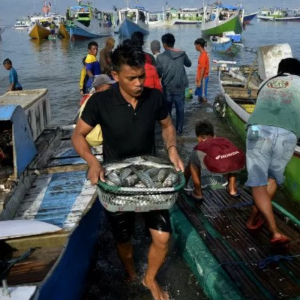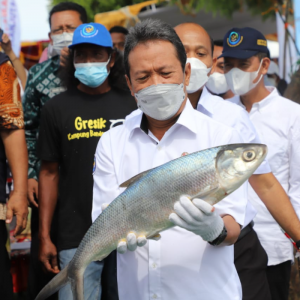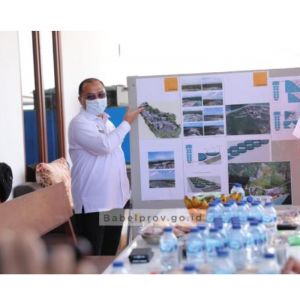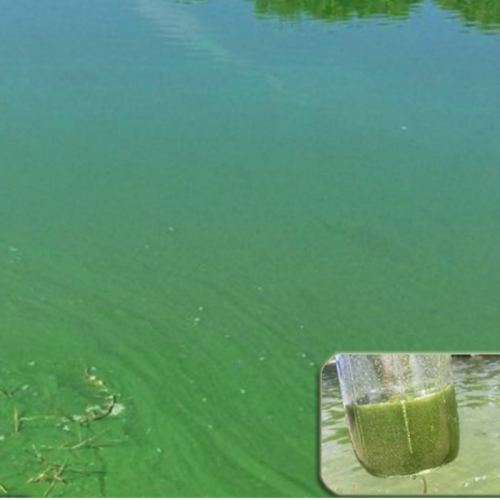
Solutions to Control Blue-Green Algae in Grow-out Ponds
| Tue, 03 Sep 2019 - 10:30
The control and control of blue-green algae is an important solution in aquaculture, in many cases it can determine the success or failure of an entire crop.
Blue-green algae (Cyanobacteria) - as we often call them - are actually photosynthetic bacteria that have photosynthesis and they are more closely related to bacteria than algae.The growth rate of blue-green algae is slower than other algae. At temperatures greater than 25 ° C, most blue-green algae grow at maximum growth rates. Unlike other algae that feed on the food chain in the food chain, blue-green algae are not attacked by zooplankton but are attacked by bacteria and viruses, algae's ability to recover themselves. Lam is also higher than other algae, therefore, although it has a slow growth rate, it is difficult to destroy and grow more sustainably.
Also read: Algae Detection System Aims to Help Aquaculture Bloom
Among autotrophs, blue-green algae is considered the most primitive group. Their fossil record was discovered about 3.8 billion years ago. They are arranged immediately after the bacteria, especially with other groups because in addition to features such as no real nucleus, no sausage, only contain chlorophyll a, pigments in addition to protein nature often make them blue. they also do not have a sexual reproductive system, and dissociation is simple, single-cell or fibrous. Blue-green algae don't have butterflies, they move mainly by sliding on the surface. Most are found in fresh water, and in moist soils, a few species are found in saltwater environments.
First of all, we need to affirm: Blue-green algae is a toxic algae, not beneficial for aquaculture ponds. Blue-green algae is not a food for animals, they thrive in the middle and at the end of the breeding cycle, when animal waste accumulates and food waste makes algae thrive like a a thick layer of varnish will cover the pond surface, when algae thrive, it will cause oxygen depletion at night depending on the density of algae, contributing to the suffocation of aquatic animals due to lack of oxygen. In addition to causing the above conditions, they can also produce toxins that cause disease in shrimp, fish, especially filtered fish such as white sesame, sesame flower and even humans if ingested.
Also read: Making Algae Can Get Expensive. Innovations Aim to Bring Costs Down
Nitrogen (N) and phosphorus (P) are important factors in algae growth, and the N: P = 7: 1 ratio is essential for algae growth. Both of these elements are present in the pond through organic decomposition, but phosphorus content is lower and more necessary. Both nitrogen and phosphorus are found in shrimp and fish feeds; Therefore, overfeeding often causes algae to grow dense, causing lack of oxygen. The composition of algae species grown in ponds depends on the N: P ratio. When the ratio of N: P is high, that is, the source of P in the pond is low, green algae prevails, but if the ratio of N: P is low, the higher the source of P, the blue-green algae will grow.
In high-density intensive ponds, especially with vannamei, the feed is constantly provided, meaning that N and P sources are always present in the pond. In addition, P in the diet is not fully absorbed due to the lack of Phytase enzyme in the digestive system of shrimp, so the amount of phosphorus released into the environment is very large. The problem is more serious, if the feed is left over and is not well controlled. In most cases, blue-green algae will develop later, especially in the dry season when the water temperature is suitable for maximum blue-green algae growth. Therefore, adding Phytase enzyme to daily diet is also an effective solution to prevent blue-green algae.
Blue-green algae are divided into two types: filamentous algae and granular blue-green algae; The common granular blue-green algae is Microcystic sp ...; Common filamentous algae such as: Nostoc sp, Anabaena sp, Oscillatoria sp ...
Control of blue-green algae in grow-out ponds
How to recognize when ponds have blue-green algae: Use Secchi plate to measure the transparency of water, if pond is less than 30cm, it is a warning of pond water being excess nutrients, algae grow too thick. As blue-green algae grow in a dense density and the tiny particles can be seen on the surface of the water with the naked eye, pond water will be blue, turquoise, green, scaly on the surface of the water and have a foul odor. The scorching sun is blue and blue, often floating in the water and drifting towards the wind.
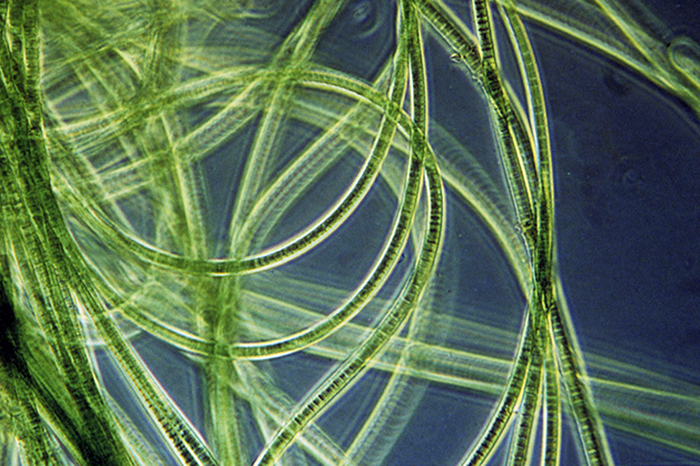
Figure 1: Magnified filamentous cyanobacteria. Photo: botnam.com
When identifying ponds with the presence of blue-green algae and they are growing quite strongly, we need to come up with solutions to control and control blue-green algae in time, if not handled promptly, the consequences will be very high. big, sometimes damage a farming. There are many different solutions to control blue-green algae, physical / mechanical solutions, chemical and biological solutions. However, each method has different advantages and disadvantages. Except measures for biological and physical measures to chemistry often results in dead algae mass causing fluctuations in water quality, seriously affecting the pond, we would like to be presented Introduce some of the most effective solutions to this problem:
Physical / mechanical solution
Decreased feeding, or discontinued feeding 02-03 meals.
For water exchange: You can change at least 30% of the water in the pond, changing within 02 to 03 days, once a day. This can help lower nutrient concentrations in the pond and reduce algal density.
Aeration enhancer is also used as a mechanical approach to algae control. Adding oxygen to the pond bottom can stimulate phosphorus to bond and be absorbed into the sediment of the pond. This prevents phosphorus from being available in the water for use and growth. This method is more suitable when controlling planktonic algae such as blue-green algae.
Also read: Is Fresh Algae or Powdered Algae Better for Shrimp Seed?
In addition, using a water blower not only provides oxygen for the growth of microorganisms, they also have the effect of creating a flow, collecting accumulated organic compounds to easily remove them, releasing toxic gases and avoid stratification of water sources.
In our opinion, this solution is only temporary, not lasting, it only reduces the density of algae in the pond and algae will re-emerge (including blue-green algae) when appropriate conditions.
Chemical solution
First, farmers proceed to reduce feeding, or stop feeding 02-03 meals.
When algae growth is detected, use chemicals to treat as follows: BKC (Benzalkonium Chloride) at a dose of 1 liter / 1,000m 3 of water or Clear-80 at a dose of 1.5 liters / 1,000m 3 of water. Use at 09-10am, running aeration continuously.
Or maybe use Coptrol (Australian product) is a product in the form of organic copper, used to kill algae according to the latest technology and has a very good effect. Friendly products, easy to use. First, determine the required amount of each pond, then mix with water in the ratio 1:10 - 20 (01 liter of Coptrol for 10 - 20 liters of water). Dosage of 01 - 1.5 liters Coptrol / 1,000m 3 of water. Spray solution evenly on the surface of shrimp pond. Use sprayer / sprayer or agricultural sprayer to spray directly onto the pond surface. Note that Coptrol should not be used in the case of hardness (CaCO 3 ) of water below 50 ppm and when the water temperature is below 16 oC. In addition, many algae die will lose oxygen in the water, this will affect the health of shrimp and fish. Therefore, it is necessary to kill algae slowly, it is best to divide the lake / pond into 2-3 times to kill and each removal about 10 days apart. Aerators need to be fully operated during this period to ensure there is enough oxygen to supply the pond.
Also read: Algae oil producer Veramaris opens $200m Nebraska plant
As we have mentioned, this solution still has some shortcomings, chemical agents often lead to the result of mass death of algae causing water quality fluctuations, seriously affecting animal health. feed. In addition, the use of chemicals to kill algae in shrimp ponds if not calculated carefully can also directly affect shrimp farming, chemical residues, releasing harmful toxins, damaging the bottom. ponds and kill all beneficial algae.
Biological solution: This is the safest and most effective solution.
Facing the danger that algae growth is too strong, causing huge losses for farmers, we researched and proposed the solution of using probiotics to safely and effectively reduce the density of algae. The handling measures are as follows:
- When detecting algae in the overgrown pond, farmers need to reduce feeding or stop feeding from 02 to 03 meals;
- Use probiotics such as Pond Plus of Bayer Company with a dosage of 200g / 1,000m 2 . Beat at night with strong aeration;
- The next day using BZT probiotics made in the US with a dose of 100 g / 1,000m 2 or PonDtox of Bayer Company with a dose of 200g / 1,000m 2 to treat pond bottom environment and toxic gas.
- In the process, using minerals to beat shrimp to help shock, increase resistance when the environment changes.
This solution has a very high safety, helps stabilize the environment, does not affect the health of farmed shrimp; We have used it many times in the unit's ponds; In addition, it also guides some shrimp farmers in the province, the results are very satisfactory, limiting the damage caused by the algae growth that is so strong in commercial shrimp farming.
Above, are the solutions used to control and control blue-green algae, a species of algae that is not beneficial in aquaculture in general and shrimp farming in particular. Of the above solutions, biological solution is the most optimal solution as we have analyzed above. We wish you a successful shrimp farming.
Source : tepbac.com













